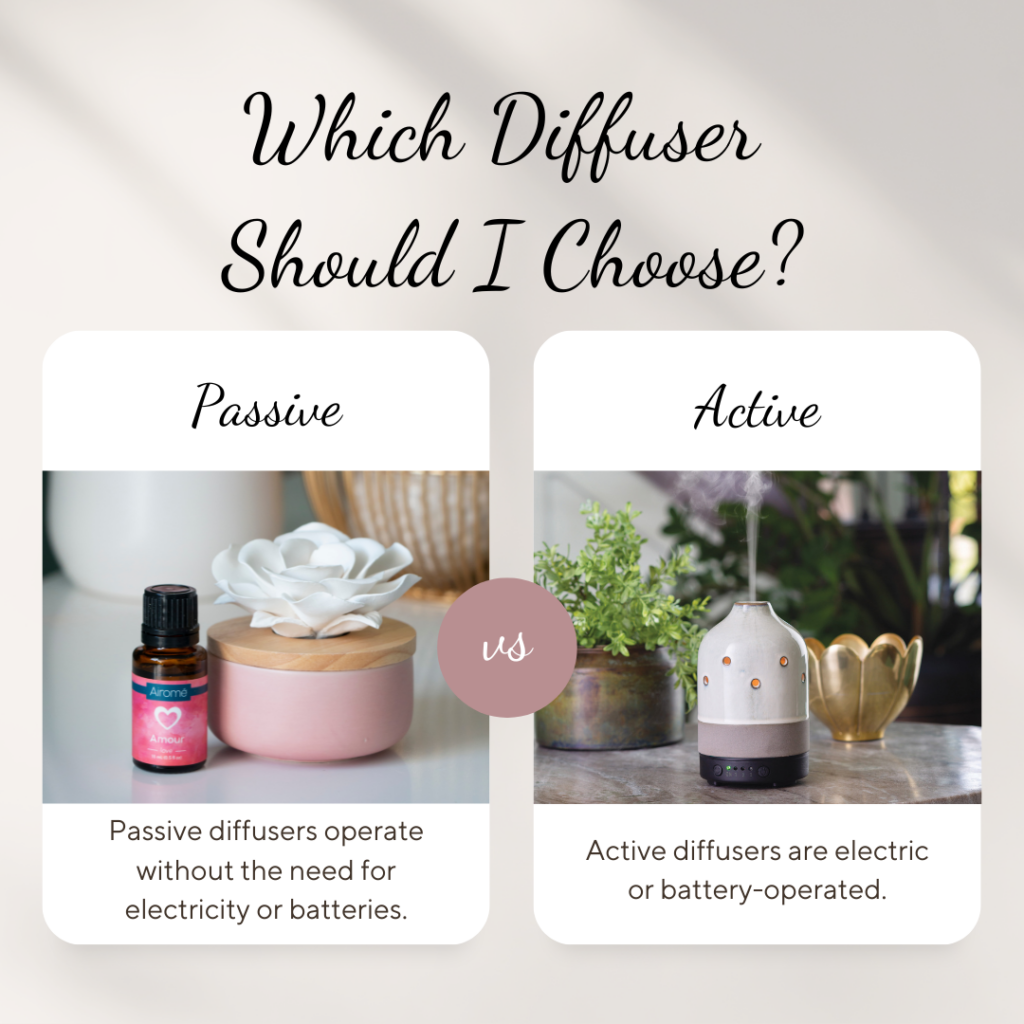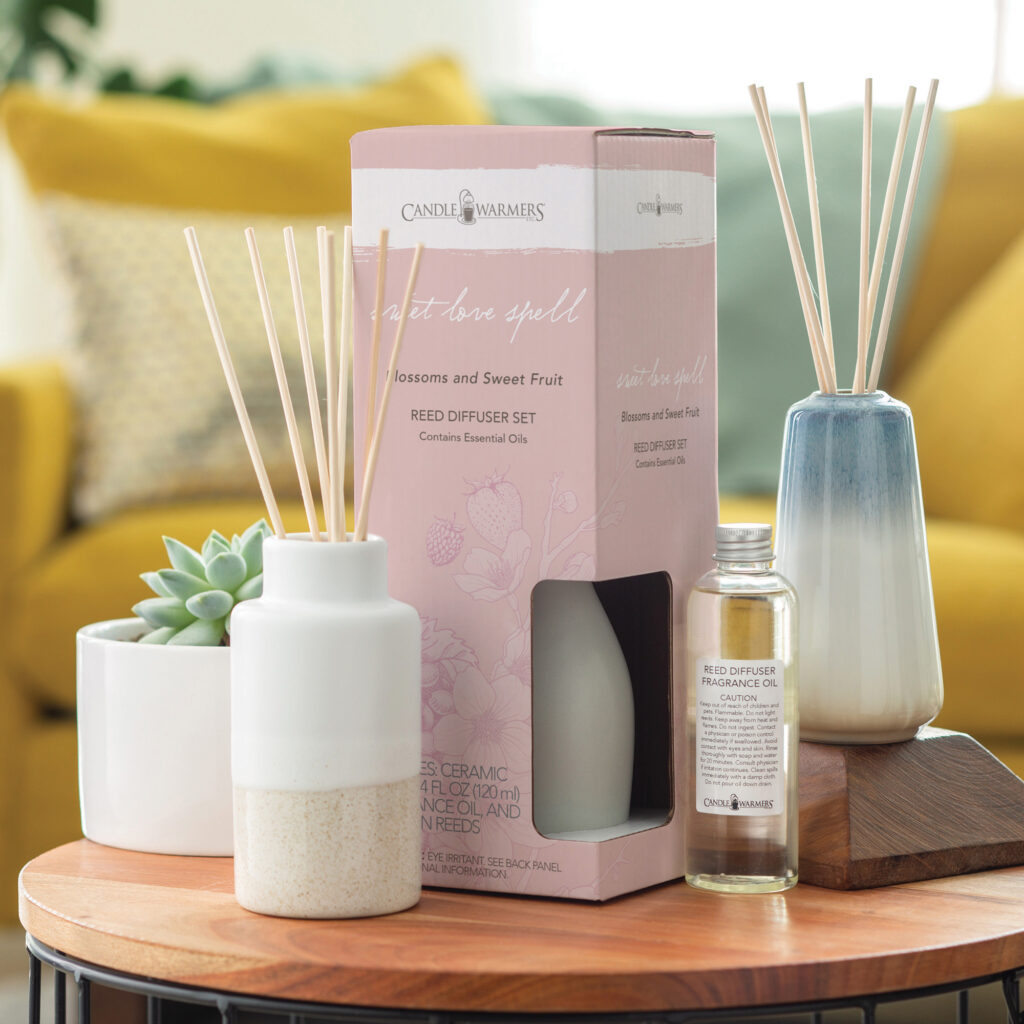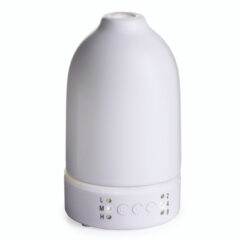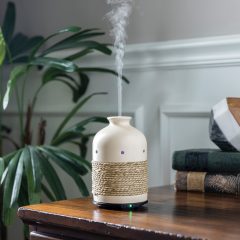Scent has the power to evoke memories, influence moods, and create a soothing ambiance in any space. With the growing popularity of aromatherapy and the use of essential oils, diffusers have become a must-have item for many households and offices. When exploring the world of diffusers, you’ll likely encounter two primary types: passive and active diffusers. Each comes with its unique features, benefits, and considerations, making it important to understand their differences before making a choice. In this blog post, we’ll dive into the distinctions between passive and active diffusers and help you determine which one suits your lifestyle best.

1. Passive Diffusers: Embrace Simplicity and Elegance
How They Work: Passive diffusers operate without the need for electricity or batteries. They work by using natural airflow or heat to disperse the aroma of essential oils into the surrounding environment. The diffusion process can be slow and gentle, providing a more subtle and continuous scent.
Examples of Passive Diffusers:
- Reed diffusers: These consist of a container filled with essential oil and reeds that soak up the oil and release the fragrance into the air.
- Porcelain diffusers: Porous clay diffusers absorb essential oils and gradually release them.
- Pluggable Diffusers: These diffusers gently warm a cotton pad that has essential oils dropped onto it.
Advantages:
- No electricity required: Reed and Porcelain Passive diffusers are eco-friendly and energy-efficient since they don’t rely on power sources.
- Simple and silent: They operate silently, making them ideal for bedrooms, meditation spaces, and offices.
- Long-lasting scent: Passive diffusion tends to provide a continuous aroma for an extended period.
Considerations:
- Scent intensity: Passive diffusers offer a more subtle aroma, which might not be suitable for those seeking a strong and immediate fragrance impact.
- Limited space coverage: Due to their gentle diffusion process, they are better suited for smaller rooms and personal spaces.
2. Active Diffusers: Power and Control at Your Fingertips
How They Work: Active diffusers are electric or battery-operated devices that use various mechanisms to disperse essential oil particles into the air actively. They offer more control over the intensity, timing, and sometimes even the type of diffusion.
Examples of Active Diffusers:
- Ultrasonic diffusers: These use ultrasonic vibrations to break down essential oils into microparticles, creating a fine mist that is released into the air. Ultrasonic Diffusers use a few drops of essential oils and water.
- Nebulizing diffusers: They use pressurized air to disperse undiluted essential oil, producing a potent aroma.
Advantages:
- Customizable and potent: Active diffusers allow you to adjust the intensity and duration of diffusion according to your preference.
- Suitable for larger spaces: With more power, they can efficiently scent larger rooms or open-concept areas.
- Therapeutic benefits: Certain active diffusers, like nebulizing diffusers, preserve the therapeutic properties of essential oils without altering their chemical composition.
Considerations:
- Noise: Some active diffusers, especially ultrasonic ones, produce a slight humming sound during operation.
- Maintenance: Active diffusers may require more regular cleaning and maintenance, especially if they use water to disperse oils.
Choosing Wisely: Considerations for Your Lifestyle
Selecting the right diffuser for your needs largely depends on your lifestyle, preferences, and the space you want to scent. Here are some factors to consider:
1. Room Size: For smaller rooms or personal spaces, a passive diffuser like a reed diffuser or porcelain diffuser might suffice. If you intend to scent a larger room or open area, an active diffuser with a nebulizing or ultrasonic mechanism would be more effective.
2. Intensity and Customization: If you prefer a gentle and consistent scent throughout the day, a passive diffuser would be a good fit. For those who enjoy stronger aromas or want the ability to adjust diffusion settings, an active diffuser offers more control.
3. Eco-Friendliness: Passive diffusers are more eco-friendly as they don’t require electricity or batteries. If sustainability is a priority for you, consider opting for a passive diffuser.
4. Noise Tolerance: Passive diffusers are silent, making them ideal for noise-sensitive environments. On the other hand, some active diffusers may produce a soft hum.
5. Aesthetic Appeal: Both passive and active diffusers come in various designs and materials. Choose one that complements your interior decor and personal style.
Understanding the difference between passive and active diffusers empowers you to make an informed choice that aligns with your lifestyle and preferences. Whether you value simplicity, eco-friendliness, or customization, there’s a diffuser out there to suit your needs and bring the delightful world of aromatherapy into your life. Happy diffusing!










